Fes old medina (II): smells and prayers – Morocco
Fes, the second day – Borj Nord and the old medina
Short Description. In the first part of the day, I went to Borj Nord and the Merenids Tombs, then back to Fes-el-Bali. In the old medina, I headed to the souqs’ area (bazaars of all kinds) near Nejjarine Square.
Long Description.
Every morning, Mohamed served me the standard breakfast. Green tea with lots of sugar and a fresh mint leaf, and cornbread-sized-grain with fruit jam or melted cheese. Meanwhile, he smiled and pampered me “the queen of the house.”
After breakfast, I exited the medina and had a hard time crossing the traffic-jammed ring road of Fes. I started to hike up the hills toward Borj Nord – an old fort overlooking the medina’s northern side. Further, I sneaked amidst sheep footpaths, bushes, and dried grass. Mustafa (apparently a friend of Mohamed) was sitting in the shade of a tree and approached me. He spoke pretty good English, so I briefly explained to him I come from Romania. In the evening, Mohamed would already know which path I hiked up to Borj Nord. Mustafa had already told him that he talked to me.
From Borj Nord, you could see the medieval medina surrounded by massive, well-preserved fortification walls built of mudbricks (tabiya). Parabolic antennas stood on the rooftops of most houses and alternated with minarets of the mosques. On the surrounding hills, you could see empty areas full of garbage or Muslim cemeteries with numerous Mecca-oriented tombs. Likewise, Borj Nord was the most popular among the ten Renaissance-Portuguese bastions built to defend the surroundings of the old medina. The old fort housed the Weapon Museum, which displayed thoroughly crafted rifles, handguns inlaid with jewels, and gigantic cannons.
From Borj Nord, I crossed a park with green olive trees, cactus plants, and people having a picnic. After that, I passed Hotel des Merinides and headed toward the neighboring hill, to the ruins of the Merenids Tombs. There, many of the white tombstones in the cemetery had decorations with colorful tiles. Moreover, old tombs spread all over the slopes of the surrounding arid hills, while new neighborhoods were being built on the outskirts of the town. From the Merenids hilltop, you could take in the true immensity of the medina tucked down in the depression.
At noon, I returned to Fes-el-Bali and wandered throughout the old medina. When I passed the shop Chez Mustafa – Fassi Potterie Traditionelle in the Talaa Sbira street, Mostafa noticed me. He insisted on entering his pottery shop, even though I told him I didn’t want to buy anything. Similarly, the same thing happened at the Herboriste Nomade shop, where I eventually purchased a well-bargained Argan soap (20 Dirhams). Next, I stopped at Centre Ain Alou, where I deepened my knowledge about the cosmetic treatments of the Arab world. There, you could try henna products, rose water, solid shampoo ghassoul, and savon beldi – black soap in bulk used for hammam scrubbing. Wherever you went in the medina, everybody smiled and invited you for a mint tea. As a result, I lost the number of tea glasses I had in different shops.
In Souq el-Henna, vendors sold natural lipstick made of poppy flowers and solid perfumes of different extracts. I negotiated a henna tattoo (30 Dirhams) at one of the stalls. A woman used a syringe filled with soft henna paste and drew an intricate model on my hand for half an hour. The henna tattoo got dried after 30 minutes. After I removed the excess of henna, I had a tattoo that would last for five to seven days.
In Nejjarine Square, I went to the Museum of Wood Arts and Crafts refurbished in an old inn. The museum displayed intricate wood carvings and old tools. Moreover, you could admire the whole medina from the rooftop while enjoying an orange fresh juice. After that, I randomly wandered the streets in the medina. I passed shrines, mosques, Koranic schools, and public fountains. Then, I crossed the Qiassaria – the oldest and largest market in the medina of Fes. The market had souqs of all kinds (fruits, textiles, leather goods, wool, clothes, jewels, silks, etc.). Subsequently, I discovered a new Koranic school, Medersa el-Attarine, with a patio entirely decorated with mosaics, stucco work, and wood carvings. Rooms for students were disposed around the courtyard of the medersa, and the mosque sat on one side of it.
On a narrow alley, a sign with ’Caffe Terrasse: panoramic view’ written on it tempted me. I followed the indicator, climbed up a pair of steep stairs, and sat at a rooftop terrace. I negotiated an orange juice that, eventually, I got for free with an additional dinner invitation. When I returned to the bustle of the medina, I passed Souk Attarine – the spice market, and the old Medersa and el-Seffarine Square with coppersmiths and boilermakers. Further, I reached Bab R’Cif, another entrance gate in the medieval medina. In the evening, I dined next to the Bab Boujloud gate at Chez Thami Restaurant – a delicious eggplant salad and two orange fresh juices (very cheap – 10 Dirhams each).
Fake guides had a different approach in the non-touristic areas of the medina. They pointed toward a random direction and then said: ‘the medina is there, madame.’ If you ignored them, they tried more frightening threats. ‘It‘s your life,‘ they said. In the evening, Mohamed taught me how to discourage them and speak their language. For example, I learned how to say ‘La, la Shokran‘ (no, no, thank you).
Fes, the third day – the Jewish quarter and Ville Nouvelle
Short description. I went to the Mellah (the Jewish quarter), the Ville Nouvelle (the new town with French architecture), then to Fes-Jdid (the new medina). I spent the evening with Milouda’s family, and we had dinner together at Casa Aya Medina.
Long Description.
Every morning birds were chirping on the rooftop terrace of Casa Aya Medina and woke me up. After breakfast, I exited the old medina and went to Dar Batha. Dar Batha, a typical Moroccan palace, housed the Traditional Museum of Moroccan Arts and Crafts. The complex featured an Andalusian garden, lush vegetation, a central fountain, archways around the patio, and colorful mosaics.
From Dar Batha, you could quickly reach the mellah – the typical Jewish quarter of any Moroccan medina. Sultans welcomed persecuted Jews throughout Moroccan history. That is to say, nearly every city in Morocco had a Jewish neighborhood. The mellah stood near the medina or as a part of it but separated from the Muslim community. I entered the mellah through a secondary gate, where boys were playing football in the street. The walls of the houses were exfoliating or had traces of the last elections. In Morocco, votes for candidates are counted on tables scratched on the walls of houses. In the mellah, the architecture of Jewish buildings was different from the houses in the medina and Jewish houses had richly-decorated-wood balconies facing the public space of the street.
Friendly women in the mellah asked me to take photos of them. On the other hand, women in the old medina had always avoided doing that and carefully covered their faces. Similarly, little girls in the mellah kept following me and said: ‘Bon Jour Madame.’ Eventually, I got lost walking along the winding streets of the mellah but found out that all roads led to the Royal Palace. There, the Royal Gendarmerie carefully guarded the royal grounds, and a big esplanade full of tourists preceded the square in front of the palace.
A normal day in the mellah of Fes. Men were sipping their daily tea at pavement cafes. Peddlers sold anything in the main street of the mellah, Boulakhsisate. People were teeming everywhere. The road was full of motorbikes, cars, jewelry shops, and big bags with spices. In the Aben Danan Synagogue, a group of Jewish tourists sang and read from a Thora. The Thora (the Jews’ Holy Book) was rolled and kept inside the altar, but also in a place carved in the frame of the doors – called meduza. Jewish people said that if you touched that place, you would have luck.
Fake guides approached tourists in the mellah, too. The owner of a shoe shop showed me here and there a few intriguing things. Further, he guided me to the old Jewish cemetery and other secret places in the mellah. Eventually, he asked for money. I gave him some small change and told him I had money only on my credit card. However, he wanted me to go and withdraw money. At that moment, I left without saying a word while he kept talking behind me.
At noon, I went to the new part of Fes, Ville Nouvelle – the modern city with French architecture. The Ville Nouvelle in Fes had impressive avenues lined with palm trees and carefully-cared flower beds. Also, it had real estate agencies, banks, and cozy terraces on the ground floor of modern buildings. I stopped for lunch and had fish at Restaurant Florence near Avenue Hassan II, then wandered on the modern streets. From there, you could enter the new medina Fes-Jdid via the Bab Semmarine gate.
In Fes-Jdid, the new medina (only 700 years old!), you could find everything on the main street. From fresh flatbread to slippers, socks, clothing, and bowls for cooking tajine. As I left Romania with no slippers, I bought a pair of slippers myself. On the secondary, narrow streets, girls who had just gotten out of school giggled when they saw me. Somehow, they even convinced me to take photos of them and happily smiled in front of the camera. Eventually, I returned to the old medina along Avenue Moulay Slimane Bab Sagma. On my way, I passed a few mausoleums, where only Muslims were allowed to enter inside, though.
In the evening, Milouda explained to me all I needed to know about her riad for my blog article. Then, we had dinner with her family – boiled eggs, milk, and bread (a simple but nourishing dinner).
Fes old medina (II) is the continuation of the first travelogue about Fes, Morocco. The first post can be found at the following link Fes old town: smells and prayers (I). And here are all the Travelogues from Morocco (x21).
Have you been to Morocco or plan to go there? Leave a comment below this post and tell me what you liked in Morocco or what you want to see there.
Want to subscribe to my travelogues? Just leave your email in the subscription form below, and you’ll be notified when I publish a new post.
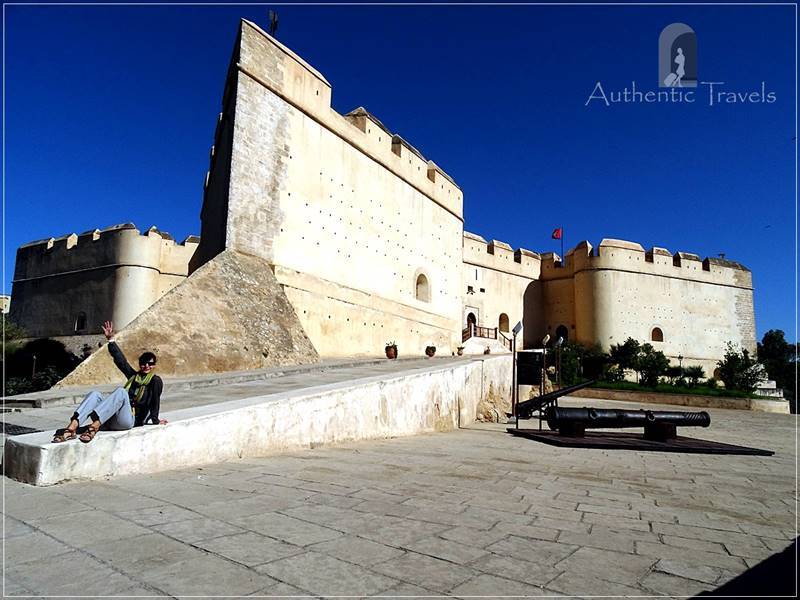
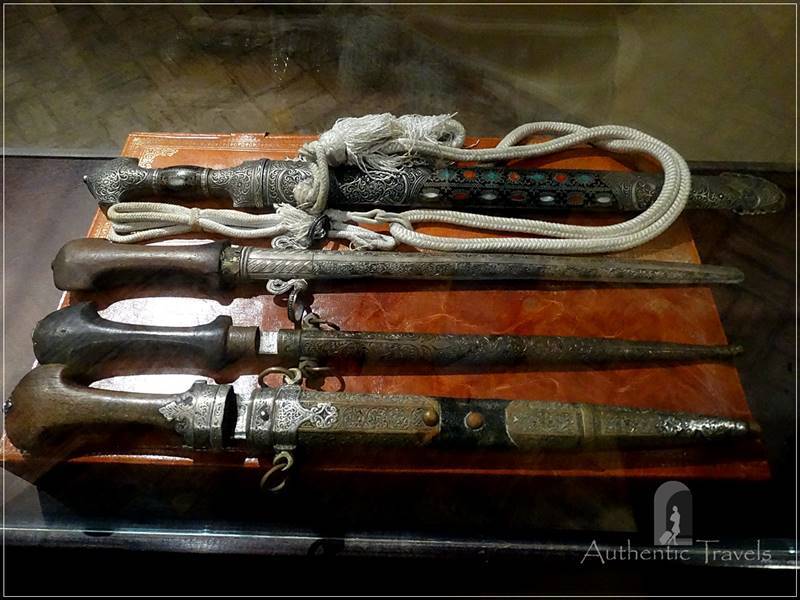
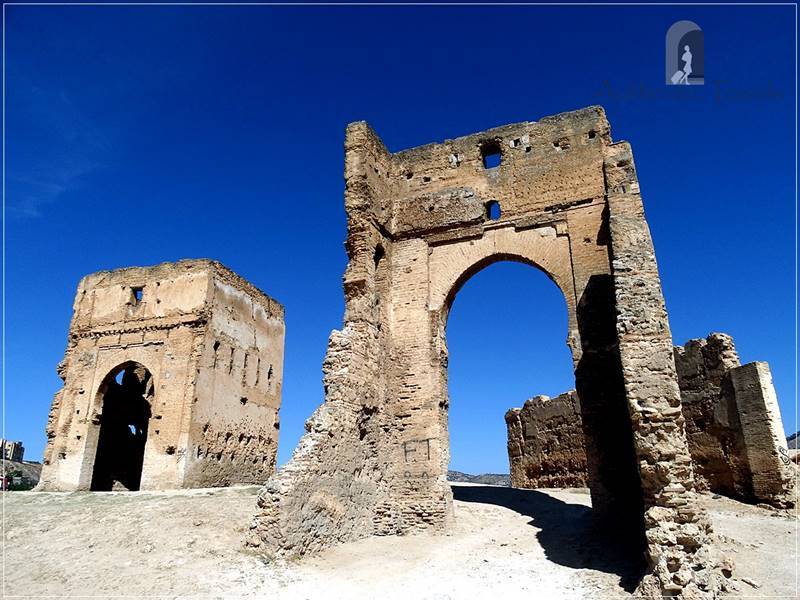
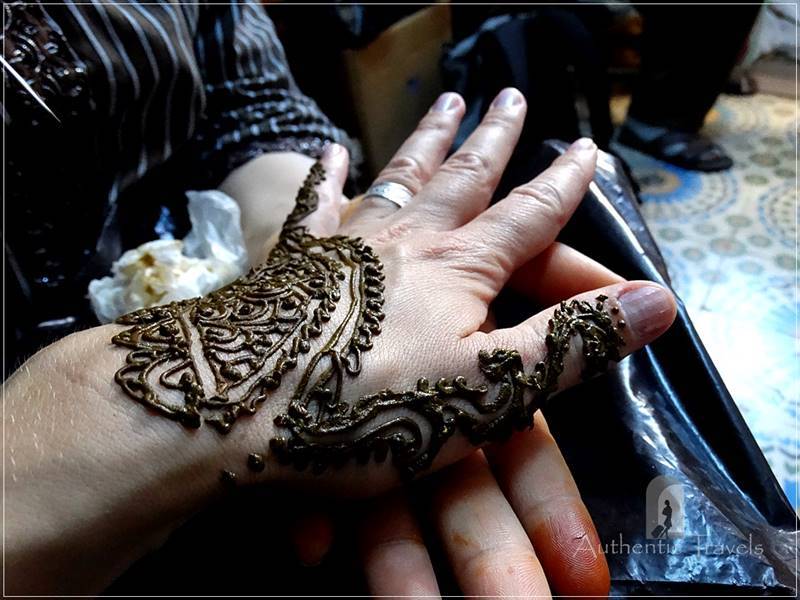
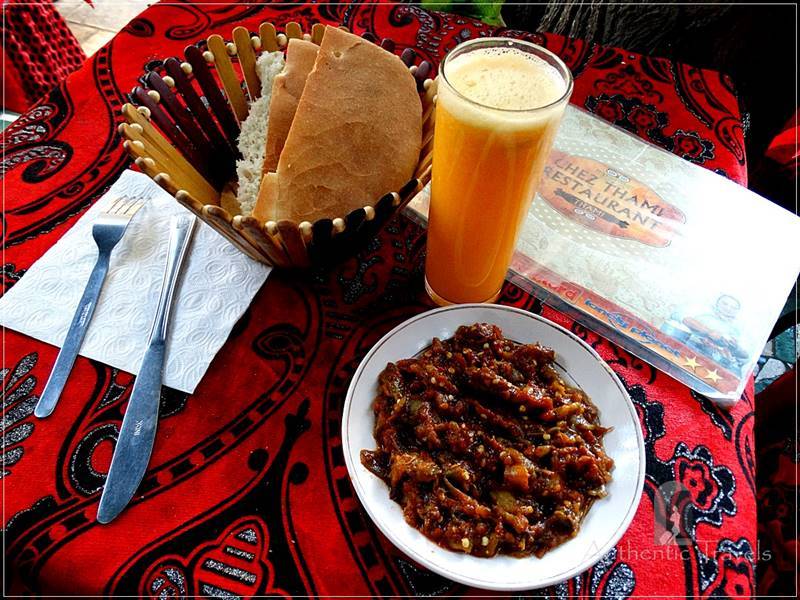
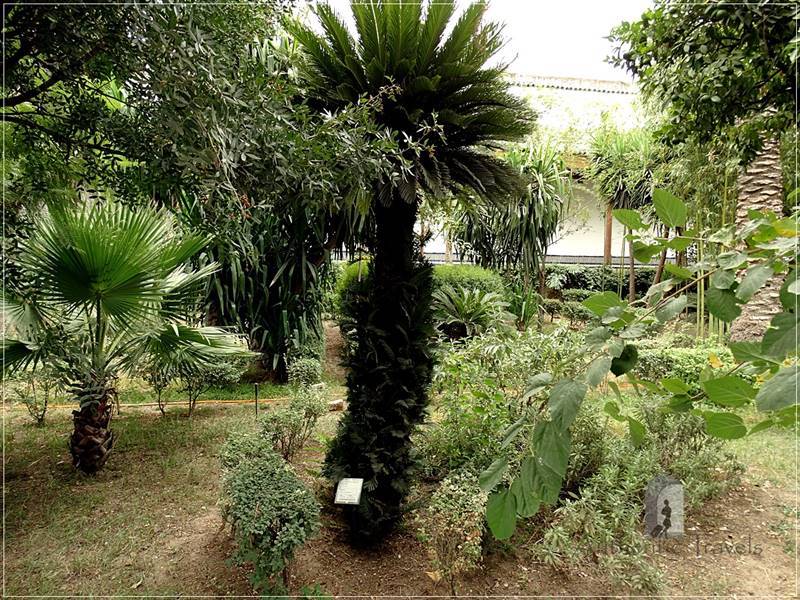
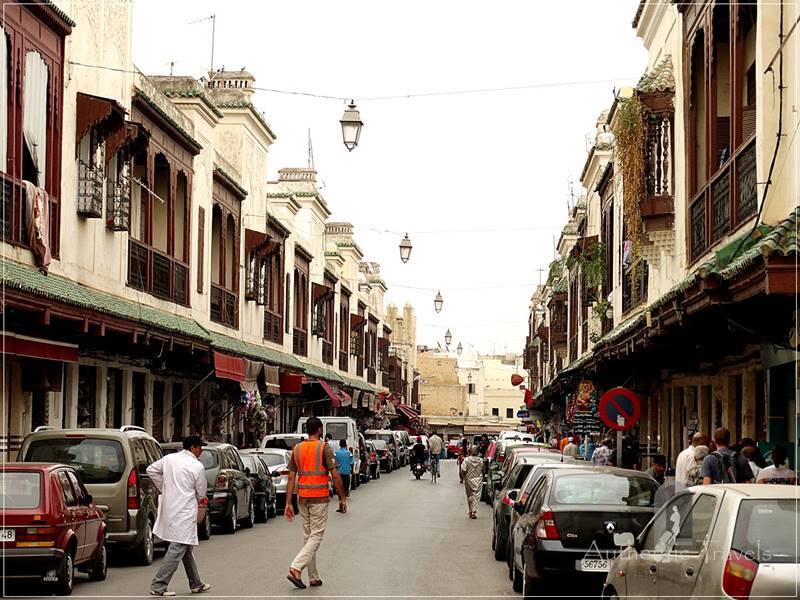
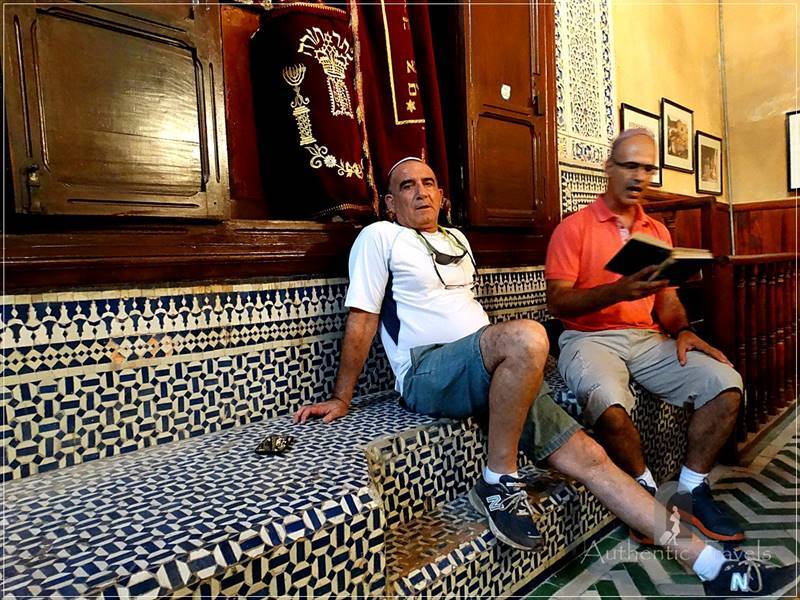
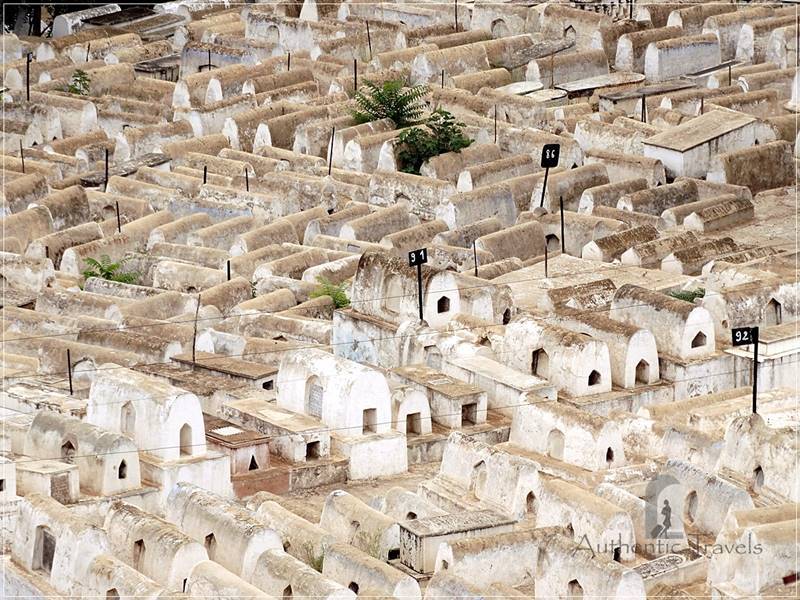
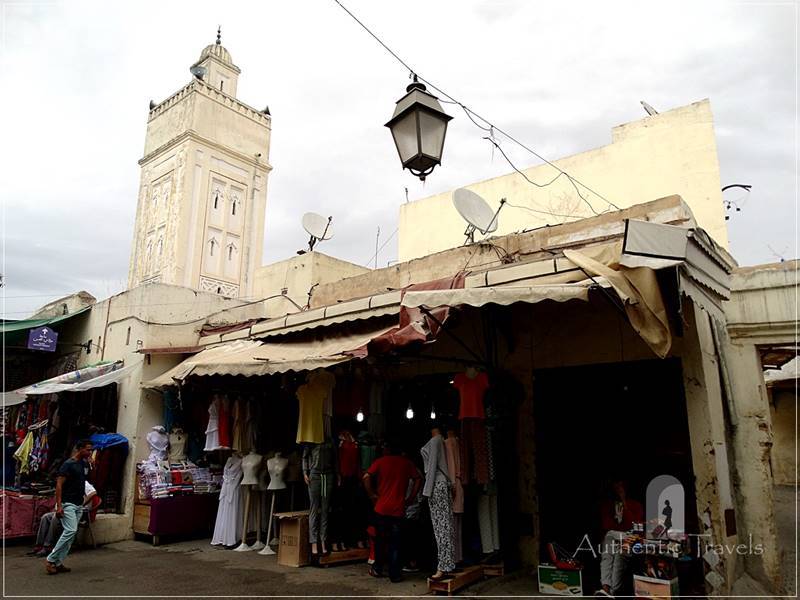
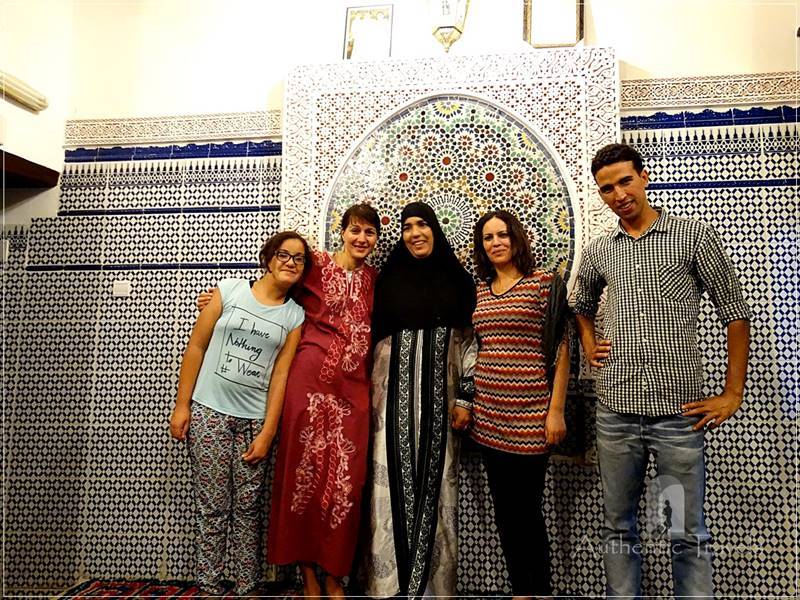
Morocco is definitely on our travel wish list. Borj Nord in Fes looks like an interesting spot to start. Hubby would definitely want to wander in the Weapon Museum. I would rather have a beautiful henna tattoo in the Souq el-Henna. Amazing that it lasts almost 7 days. The Jewish Cemetery looks fascinating with the above ground tombs. Good advice about the facts guides. And if I visit I will certainly learn how to say “no thank you” in the local language. Or hire a reputable guide.
You have amazing views of Fes medina from Borj Nord or Borj Sud. And the mellah (Jewish quarter) is a must-see in Fes as it is one of the largest ones in Morocco.
What a beautiful and yet challenging trip to take. The henna looks beautiful on you, did you purchase any of the natural lipstick? I wonder how it looks! I love anything rosewater, I’d love to have learned about the cosmetic use and its history, what a unique experience. It seems that you had a really local and authentic travel experience. How genuine and fun to read, I really feel like I was there.
No, I didn’t buy puppy lipstick (it was too red for me), but I bought loads of rose water and I still use it from time to time. It remind me of Morocco and I want to go back there.
I traveled to Morocco last year and did not get a chance to visit Fes unfortunately which I really wanted to but couldn’t. Reading this post and some of the ones you have done on your site makes me want to go back straight away. I would surely want to visit the Gun Museum refurbished in Borj Nord as I like historic artillery and this would be topping my list. It is so colourful and seems like it was very friendly too. My second most favourite place would be the The Merinids Ruins and it is absolutely a photographers paradise. Thanks for sharing the best of Fes with us.
You can have amazing views of the medina from Borj Nord and Borj Sud. They are both very well preserved and worth to go there.
I have read so many things or saw photos of Fes that it always intrigues me and I love such places. The Merinids Ruins – overlooking the old medina looks amazing and worth visiting site here. It looks you had great time in spending time with Milouda’s family at Casa Fes Aya. Thanks for all tips and information.
Milouda was a great host and I loved how she introduced me to the local culture.
I’d love to visot Fes and experience the sights and smells of the Medina. It must be super interesting to learn about the history too and explore the tombs. The food looks delicious Chez Thami Restaurant, great place to soak up the atmosphere.
All restaurants in the old medina are so great. I ate in many places and food was good and hearty. You won’t starve for sure.
I’ve wanted to Fes for a while it looks amazing. The view from the top of the Jewish Quarter is very interesting, what beautiful architecture at the cemetery. I would also like to see the Merinids Ruins. It is also good to know about the process for getting a Henna tattoo and the various goods you can buy locally.
Henna tatoo is one of the highlights in Morocco. And it looks pretty great too!
I love the narrow streets, the building architecture, the green and the food. The mosque too looks so nice with it’s white and simple structure. The shops in front look simple and nice. Medina would be great to visit sometime.
Well, there are many mosques and shops in Morocco but yes, they do look nice.
An interesting article on visiting Fes and the medina. We are planning to visit and I would definitely head towards the Herboriste Nomade and the argan soap. What a wow those jewel encrusted guns at the Gun Museum – such a thing of beauty. Loved your hanna tattoo.
I miss my henna tattoo. You can definitely buy more Argan products from Morocco as you are sure they are 100% bio. The ones you find in the European shops are more commercial and not so pure.